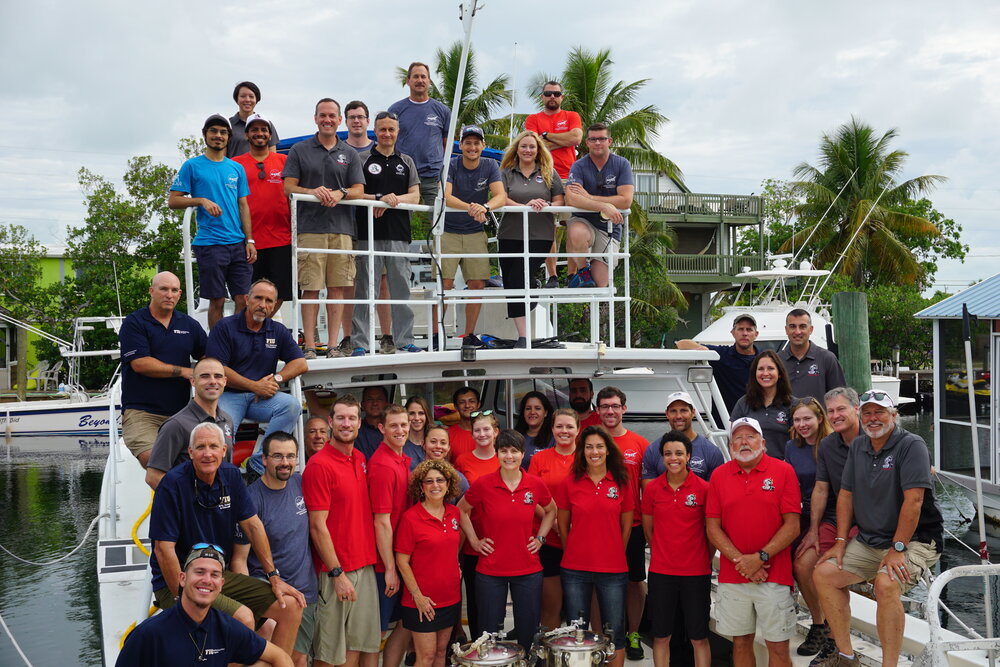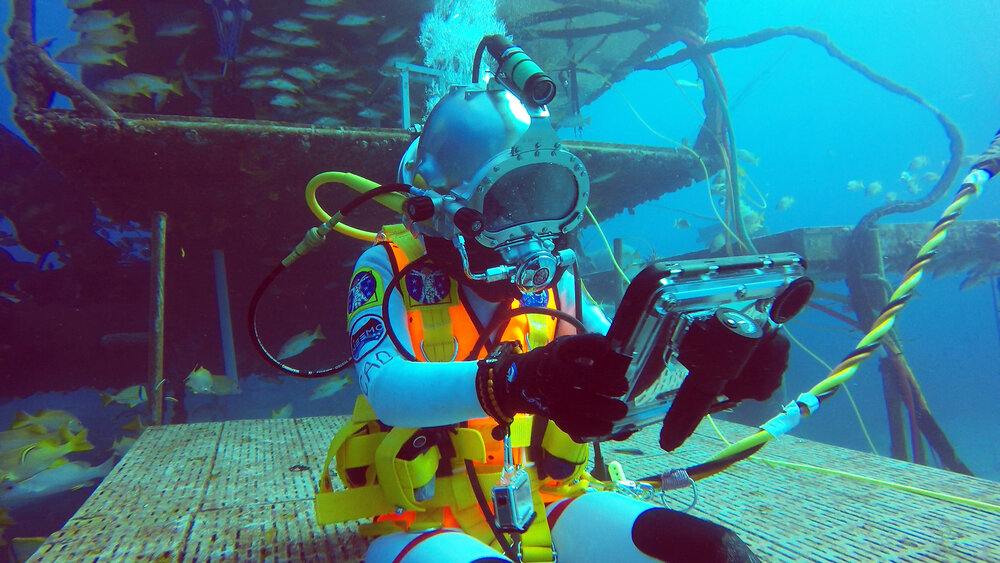
As NASA prepares to land on the Moon in the next couple years, more knowledge is needed to determine how the human body can handle such an extreme environment. The NASA Extreme Environment Mission Operation (NEEMO) is a space analog mission, which took place for the 23rd time in Florida from June 13th until 21st 2019 to simulate space exploration, especially focusing on future lunar missions.
The Aquarius Reef Base, located 62 feet below the Atlantic Ocean in the Florida Keys National Marine Sanctuary, is the world’s only undersea research station that replicates space mission conditions, including the opportunity to experience weightlessness. NASA has been sending teams of “aquanauts” on the NEEMO undersea expeditions to Aquarius Reef Base since 2001, to train astronauts, test devices intended to be used in space, and to study the physical and psychological impact of living and working in extreme environments.

So how did I become a crew member on the NEEMO 23 mission? My love for the oceans started as a small kid, when my parents introduced me to the magnificent marine life during our summer camping vacations in Bulgaria, Greece and Croatia. I have been snorkeling a lot with my Dad and was reading up everything I could find about scuba adventures. When I was 13 I tried scuba diving for the first time during a vacation in Croatia and when I came out of the water I decided that I want to dedicate my life to study and protect marine creatures and the marine environment. It took me 5 years to collect my pocket money to be able to enroll in a dive course and from there I did not stop. In the following years I took all the courses available to better my skills and knowledge and soon became a divemaster with about 500 dives. In the meantime, I pursued an academic career, but since marine biology did not exist in Hungary, I got a Masters degree in Zoology and volunteered at different marine science institutes around the world. My PhD was on the comparative brain morphology of shark and ray species and I later specialized on studying manta ray brain and behavior. In the following years I led several expeditions around the world to study manta rays in captivity and in the wild, often in quite remote areas and in challenging conditions (www.mantamissions.org).
With a PhD in neurosciences I moved to the USA and got involved in diving medicine and diving physiology research at the University of South Florida through my husband. We became involved in the NEEMO project in 2017 when my husband participated as a crew member and I was coordinating the research projects and helped as a support diver. I never thought that I would be ever considered as a crew member, but a couple months after NEEMO 22 I received a phone call. First I did not believe it and I had doubts about my abilities. But I already worked with and I trusted the people without any doubt who selected me, so I said yes. When they consider non-astronaut crew members it is important to have strong dive background, operational experience from field work, in addition to relevant academic background.
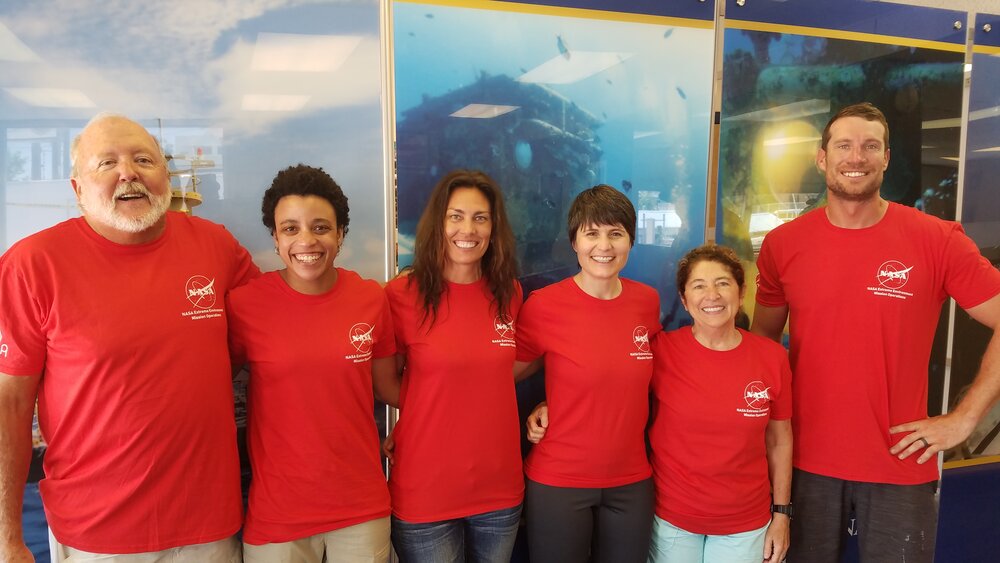
I soon found out that the other crew members will be very inspiring and accomplished people: Samantha Cristoforetti, from the European Space Agency, who holds the record for the longest uninterrupted spaceflight of a European astronaut and until June 2017, held the record for the longest single space flight by a woman. The others were Jessica Watkins, NASA astronaut candidate, and Shirley Pomponi, PhD, marine biologist at Florida Atlantic University’s Harbor Branch Oceanographic Institute. Two male habitat technicians, Mark Hulsbeck and Tom Horn were also part of the expedition.
It was especially hard work for me as I participated in the expedition not only as a crew member, but also coordinated several research projects together with a team from the University of South Florida. My main research focus was understanding the changes in psychological changes in response to living in extreme environments. We were in a high stress environment basically constantly during the 9 days, isolated from the rest of the world, in confined space, while we had to make time sensitive decisions that had serious consequences. We constantly had to deal with technical difficulties, with being task loaded and with physical exhaustion. Similarly to space missions, there was no chance to return to the surface and our mistakes or equipment failure could have led to fatal consequences. Therefore, my research was focusing on studying how stress, team dynamics, workload affect performance, and how strength, dexterity and sensory functions change in response to living and working in this extreme environment. We performed extravehicular activity (EVA)s from the habitat to simulate spacewalks, so we walked and performed tasks on the seafloor for 3-5 hours a day. My experiments were performed inside the habitat and during EVAs as well to collect data on cognitive performance, such as reaction time, short term memory, decision making, risk tolerance etc. Our USF team also focused on sleep quality, changes in blood markers, heart rate, microbiome and body composition. With these experiments our goal was to measure the current baseline and in the future increase the safety, physical and mental performance, as well as neuroprotection effectively in both genders during future undersea and deep space exploration missions.
At nights, I also used a Remotely Operated Vehicle (ROV) as part of my National Geographic Open Explorer project (https://openexplorer.nationalgeographic.com/expedition/livingunderwater), to monitor the seafloor, collect plankton samples and detect marine fluorescence around the habitat. With this schedule I usually woke up around 6:30am and went to bed at 11pm every day during the mission. Often, since I did not have time for it during the day, I checked my emails at night to coordinate the experiments with the crew on land.
Other institutes and universities had several other projects, including testing for the first time underwater a portable scanning electron microscope, tracking and augmented reality devices, simulating lunar landing, testing space exercise machine, lunar evacuation system to transport unconscious astronauts. We also tested several devices for sample collection and measured for the first time the metabolism of sponges, which tests will be applied for geological studies in space.
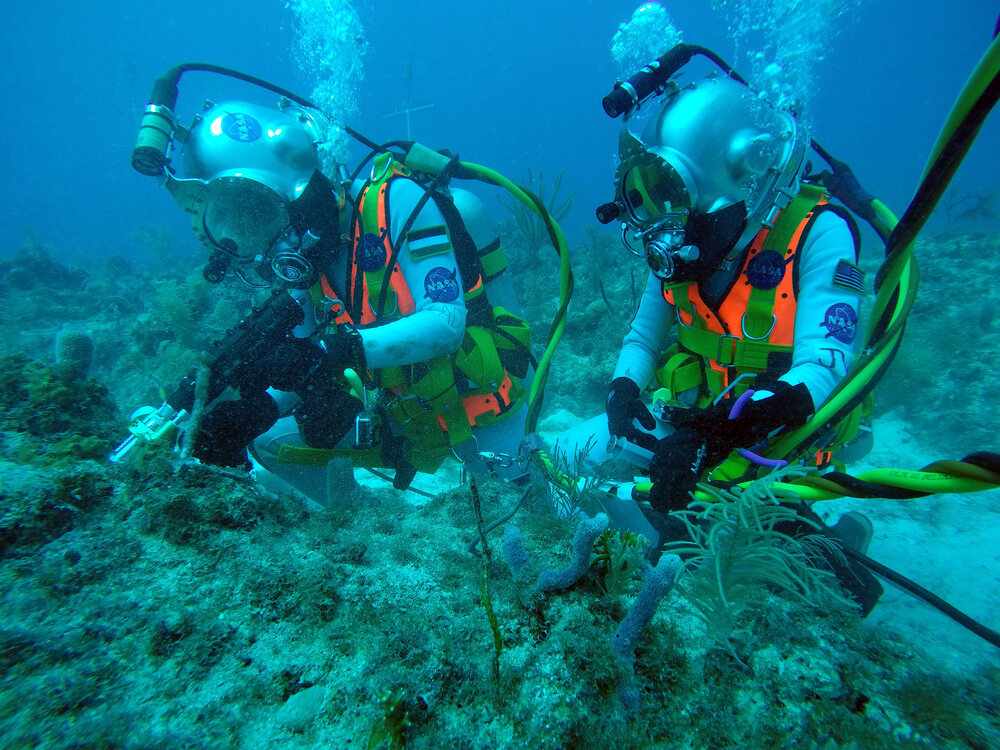
For me, probably the biggest difficulty was that the heavy gear had a big load on my neck and back muscles while gearing up and during the EVAs when I had to hold the heavy helmet against the current. Our helmet weighted 32 pounds in addition to the full dive gear we had on, plus 20 pounds extra weight attached and we had to walk down on stairs with all this gear to get in the water from the habitat. My longest EVA was 316 minutes, so it was longer than 5 hours and on that day I went back for a 1 hour long night EVA as well. We were advised in advance to take pain killers preventatively, but I rather used local anesthetic creams. Once we had to fix something on my helmet connection and I had to stand on the stairs with full gear for about 10 minutes, I would not want to do that part again.
The most difficult and memorable moments were when I had to perform a test that I knew that teams of scientists prepared for months, years and it depended on me if it works out at the end or not. For example, there was a technical difficulty with an equipment and I knew that the last chance to get it to work was when it was my turn to go on the EVA for the last time. The system finally functioned well and I worked like crazy to make up for all the lost time and collect all the samples and perform tests that the team needed. We usually get only very limited and strict communications through our helmet from the surface team, but at that time when we were heading back to the habitat they told us that everyone is cheering and jumping around on land at the Mission Control. That made me really happy.
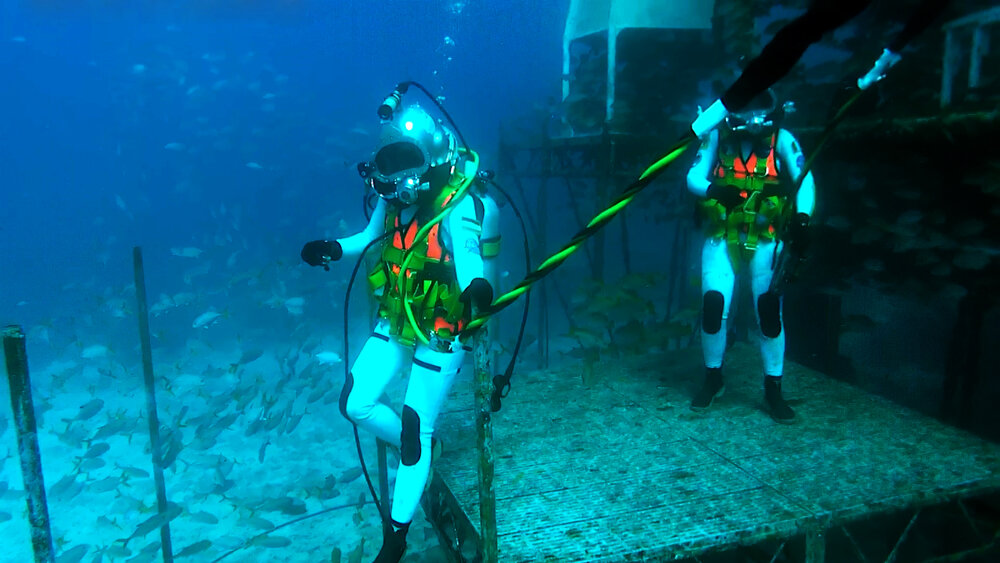
At another time my microphone on my helmet got disconnected and nobody could hear me when I was talking in the helmet. Since I also stayed motionless while pointing my helmet camera to a sponge to give a good visual, they thought that something went terribly wrong. Eventually we figured out that the helmet microphone had the issue and fixed it. In general, we constantly had to be in a problem solving mode and always adapt to whatever new situation came up, solve the problems by ourselves, with the help of the team mates or with the surface support.
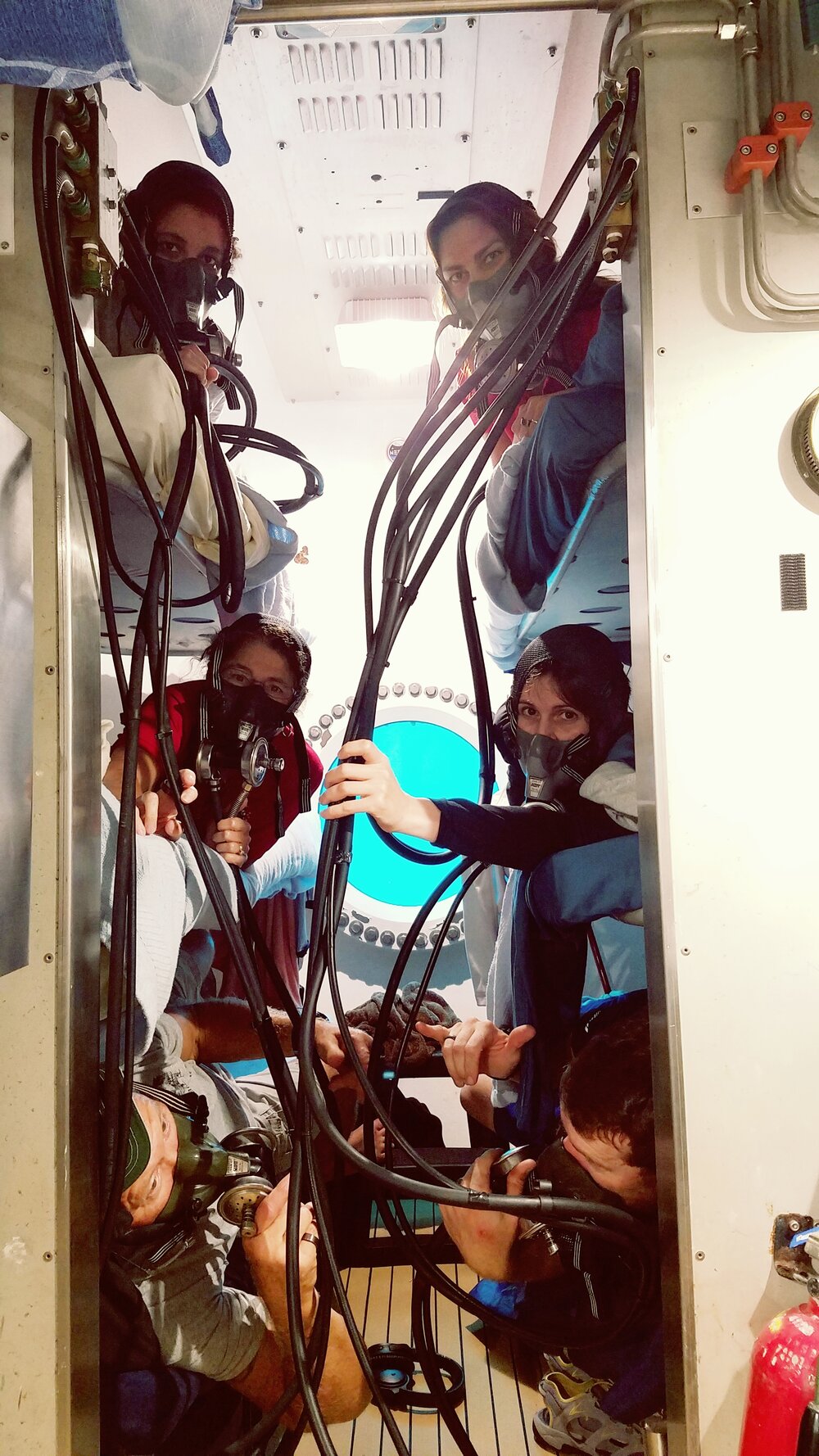
Probably the most dangerous part was the last 17 hours. We had to go through a strict decompression protocol to remove the nitrogen from our bodies. They slowly reduced the pressure inside the habitat, which created the risk of water entering the habitat and we were breathing pure oxygen for 1 hour, which increased the chance of getting central nervous system oxygen toxicity seizures. Fortunately, everything went well and we all returned safely.
Now there is a lot of data waiting to be analyzed in the following months and hopefully we will be able to contribute increasing the safety and efficiency of future space and underwater missions.
Written by: Dr. Csilla Ari D`Agostino
